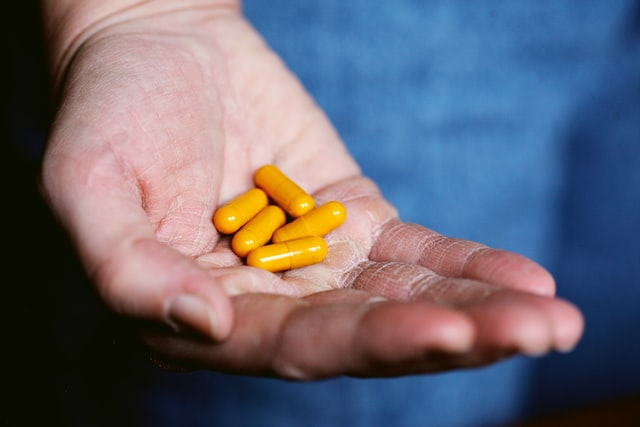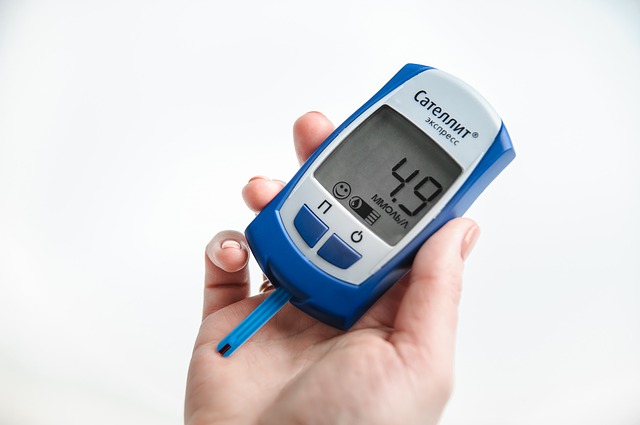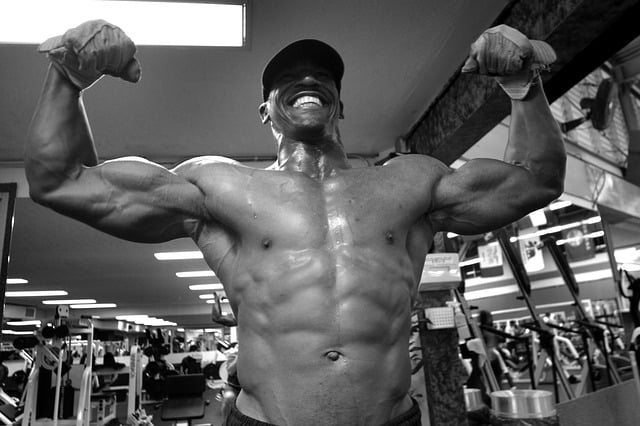
Type 1 diabetes, sometimes known as juvenile diabetes, is when your pancreas doesn't produce enough insulin. It is usually diagnosed early on but sometimes can come up in adults. Some common symptoms of type 1 diabetes are increased thirst, frequent urination, extreme hunger, bed-wetting in children who didn't wet the bed previously, unintended weight loss, irritability and mood changes, fatigue and weakness, and blurred vision. If you or your child are experiencing any of these symptoms, seek medical attention right away.
Contents
The exact cause of type 1 diabetes is unknown, but a few reasons could contribute to type 1 diabetes. These are genetics and exposure to viruses and other environmental factors. It is also thought to be an autoimmune reaction that destroys the cells in the pancreas that produce insulin.
This process can go on for months to years before any symptoms appear. The body's immune system mistakenly destroys the insulin-producing cells in the pancreas. These insulin-producing cells are called islets. Research is still being conducted to learn more about type 1 diabetes and combat it.
The Roles

Pancreas
The pancreas is an organ that contains glands that release substances to help with bodily functions. Some of the parts it aids in are digestion and controlling blood sugars. It can be found in the back of your abdomen. It is an organ and gland, meaning it is an organ, and the glands are organs that produce and release substances into the body. It has two main functions: exocrine function, which produces enzymes that help with digestion, and endocrine functions, which send out hormones that control the amount of sugar in your bloodstream.
The exocrine gland runs the length of your pancreas. Enzymes are produced that help break down food. Some of the enzymes produced are lipase, which works with bile to break down fats; amylase, which breaks down carbohydrates; and protease, which breaks down proteins.
The endocrine glands release hormones that control blood sugar. There are only two types of hormones that regulate blood sugar, insulin which reduces high blood sugar levels, and glucagon, which increases low blood sugar levels. Your body needs both hormones to balance your blood sugar levels. It helps with kidney, liver, and brain function. Your heart and circulatory system and your nervous system need balanced blood sugar levels to function.
Insulin
The role of insulin is quite simple. It is produced by the pancreas to control the sugar content in your bloodstream. Insulin is a hormone produced from your pancreas. It is secreted right into your bloodstream. Insulin circulates throughout your bloodstream, allowing sugar to enter your cells.
Therefore, the more blood sugar you have, the more insulin is needed to bring it back down to an average, balanced level. If the number of islet cells are destroyed, you'll produce little to no insulin. This is the case with type 1 diabetes.
Glucagon is secreted when your blood sugar levels are too low. Your body will send signals to your brain to let you know that you need to get some sugar. If it is a minor case, your liver will break down the stored sugar and release it into the bloodstream to raise blood sugar levels.
If the blood sugar level drops below your target, between 0.6 to 1.0 mmol/L, you need to get sugar from an outside source, like food. It would be best to ingest simple sugars that can be digested fast, like fruit juice, hard candies, raisins, glucose tablets, or gel.
Glucose
The role of glucose in your bloodstream is to provide the energy source to your cells that make up muscles and other tissues. Glucose can be found in food and your liver. Sugar is absorbed into the bloodstream, which then enters your cells. Any extra glucose that your body doesn't readily need will be stored in the liver, called glycogen.
If your blood sugar level drops, your liver will break down glycogen into glucose and use it as energy to bring your levels back into balance. With type 1 diabetes, there's no insulin to let glucose into the cells, which causes a sugar build-up in the bloodstream. This can cause life-threatening complications and needs to be dealt with right away—diet and exercise help maintain a balanced blood sugar level.
Bodybuilding

History
For those who are unaware, bodybuilding is developing muscle fibers through the combination of weight training, calorie intake and diet, and rest. Bodybuilding is a competitive sport where individuals display their physiques to a panel of judges, who assign points based on their appearance.
Early Years
The early years of bodybuilding started between 1880 to 1930. Bodybuilding was first introduced by a man named Eugen Sandow from Prussia. He is now referred to as "The Father of Modern Bodybuilding." He is known for this because he allowed an audience to view his physique in muscle display performances.
While audiences were thrilled to see a well-developed physique, those men displayed their bodies for strength demonstrations and wrestling matches. Sandow had a stage show built around his figure, and he was the first to produce a brand. As he became more popular, he invented his own equipment, such as machine dumbbells, spring pulleys, and tension bands.
Sandow was the first to organize a bodybuilding contest on September 14, 1901, called the "Great Competition." It was held in London at the Royal Albert Hall in the UK. Sandow, Sir Charles Lawes, and Sir Arthur Conan Doyle were the competition's judges.
The show was sold out and was a huge success, and the trophy was made of bronze and was Sandow himself, sculpted by Frederick Pomeroy. The winner was William L. Murray of Nottingham, England. The most prestigious bodybuilding contest today is Mr. Olympia, and since 1977, the winner has been presented with the same bronze trophy of Sandow.
Golden Age
The Golden Age is a period from 1940 to 1970. It is referred to as the Golden Age in bodybuilding because of the shift in aesthetics for more muscle mass, symmetry, and definition. It was inspired by World War II, where younger men were to be bigger, stronger, and more aggressive in their attitudes. This was achieved by more training techniques, better nutrition, and more effective equipment. More important publications came out, and new contests emerged as the sport's popularity grew.
The rise in popularity of the Amateur Athletic Union (AAU) added a bodybuilding competition to their existing weightlifting contest in 1939. The next year this competition was named AAU Mr. America. In the mid-1940s, bodybuilders became upset with the AAU since they only allowed amateur competitors and focused on the Olympic sport of weightlifting. Brothers Ben and Joe Weider decided to form the International Federation of BodyBuilders (IFBB), which was open to professional athletes.
Another organization started in 1950 called the National Amateur Bodybuilders Association (NABBA), which held the Mr. Universe contest in the UK. Another primary tournament was born in 1965 called Mr. Olympia and is currently the most prestigious title in bodybuilding. Originally, bodybuilding was only for men, but the NABBA added Miss Universe in 1965, and Ms. Olympia started in 1980.
1970s and Beyond

In 1970, thanks to Arnold Schwarzenegger and the film Pumping Iron, bodybuilding became primarily publicized. The IFBB dominated the sport by this time, and the AAU took a step back. In 1981, the National Physique Committee (NPC) was formed by Jim Manion. The NPC has become the most successful bodybuilding organization in the US and is the amateur division of the IFBB.
Anabolic Steroids and Bodybuilding
This period of bodybuilding and athletic sports has seen a rise in anabolic steroid use. To combat this and be allowed to be an IOC member, the IFBB introduced doping tests for both steroids and other banned substances. While the tests occurred, most professionals still used anabolic steroids for competitions. In 1990, the US Congress in the Anabolic Steroid Control Act placed anabolic steroids into Schedule III of the Controlled substance act.
In 1990, Vince McMahon, a wrestling promoter, announced he was forming a new bodybuilding organization called the World Bodybuilding Federation (WBF). He wanted to bring WWF-style showmanship and more significant prize money to bodybuilding. He signed 13 competitors to lucrative long-term contracts, which was unheard of in bodybuilding before.
Most of the WBF competitors jumped ship from the IFBB. The IFBB also quietly stopped testing their athletes for anabolic steroid use since competing was challenging. Thus, a new organization did not test for steroids. In 1992, Vince McMahon instituted drug testing for WBF athletes because he and the WWF were under investigation by the federal government for alleged involvement in anabolic steroid trafficking.
Olympics?
In the early 2000s, the IFBB attempted to make bodybuilding an Olympic sport. It obtained full IOC membership in 2000 and was trying to get approved as a demonstration event at the Olympics, hopefully adding it as an entire contest. Unfortunately, this never happened because some argue that bodybuilding is not a sport because the actual match does not use athletic effort.
Also, some still have the misconception that bodybuilding necessarily consists of anabolic steroids, which are prohibited in Olympic competitions. Bodybuilder advocates argue that the posing routine requires skill and preparation, and bodybuilding should therefore be considered a sport.
Nutrition While Bodybuilding
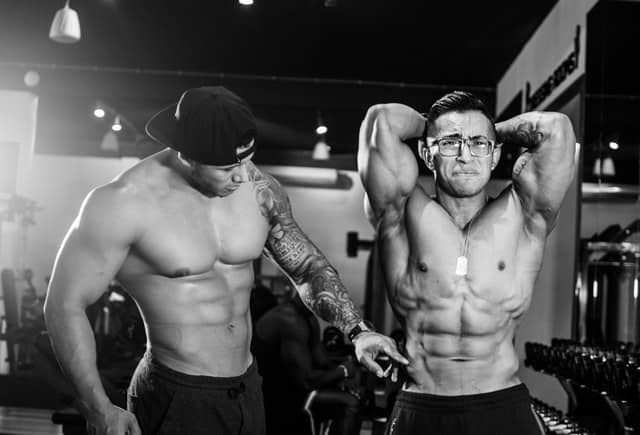
Bodybuilding requires a specialized diet for high levels of muscle growth and repair. To increase muscle mass, they need more calories than the average person or the same height and above their maintenance level. In preparation for a contest, a bodybuilder's sub-maintenance level of food energy is combined with cardiovascular exercise to lose body fat. The ratios of food energy from carbohydrates, proteins, and fats vary depending on the bodybuilder's goals.
Carbohydrates
Carbohydrates play an essential role for bodybuilders. They give the body energy to deal with the rigorous training and recovery. Bodybuilders seek low-glycemic polysaccharides and other slow-digesting carbohydrates, which release energy more stably than high-glycemic sugars and starches.
This is important as high-glycemic carbohydrates cause a sharp insulin response, which places the body in a state where it is likely to store additional food energy as fat rather than muscle and waste energy directed towards muscle growth. However, bodybuilders frequently ingest some quick digesting sugars (often in the form of pure dextrose or maltodextrin) after a workout. This may help replenish glycogen stores within the muscle and stimulate muscle protein synthesis.
Proteins

Protein is probably one of the most critical parts of the diet for the bodybuilder to consider. Functional proteins such as motor proteins, including myosin, kinesin, and dynein, generate the forces exerted by contracting muscles. Current scientists says that bodybuilders should consume 25-30% of protein of their total calorie intake to further their goal of maintaining and improving their body composition.
This is a widely debated topic and which kinds of proteins should be used. Bodybuilders require higher quality protein with a high BV rather than relying on protein such as soy, which is often avoided due to its estrogenic properties.
Intake
Bodybuilders usually split their food intake for the day into 5 to 7 meals of roughly equal nutritional content and attempt to eat at regular intervals (generally between 2 and 3 hours). This process used to be considered a mechanism for increasing basal metabolic rate compared to less frequent meals with the same energy content, but research has debunked this myth.
Supplements
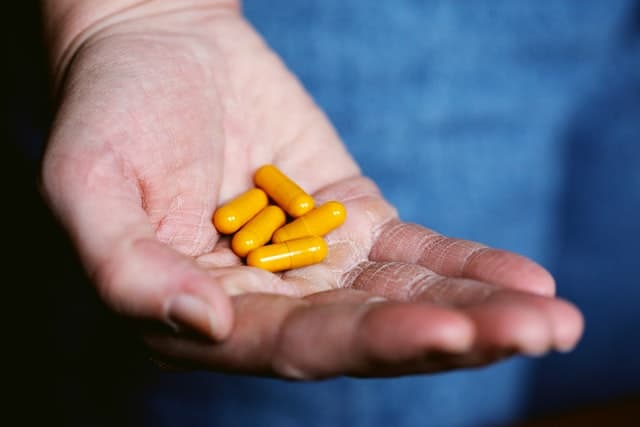
Since bodybuilders' vital role in nutrition is building muscle and losing fat, they can consume various dietary supplements. Different products are used to augment muscle size, increase the rate of fat loss, improve joint health, and prevent potential nutrient deficiencies. Scientific consensus supports the effectiveness of only a few commercially available supplements when used by healthy, physically active adults.
Creatine is probably the most widely used performance-enhancing supplement, and it is perfectly legal. Creatine works by turning into creatine phosphate, which provides an extra phosphorus molecule in ATP regeneration. This will give you more energy that lasts longer during short, intense bits of work—IE weight training.
Performance Substances
Most bodybuilders choose to use drugs to gain an advantage in hypertrophy, especially in professional competitions. Although these substances are illegal without a prescription in many countries, anabolic steroids, and precursor substances such as prohormones are used very frequently in professional bodybuilding. Anabolic steroids cause muscle hypertrophy of both types (I and II) of muscle fibers caused likely by an increased synthesis of muscle proteins.
Some negative side-effects accompany steroid abuse, such as hepatotoxicity, gynecomastia, acne, male pattern baldness, and a temporary decline in the body's testosterone production, which can cause testicular atrophy. Growth Hormone (GH) and insulin are also used. GH is incredibly expensive compared to steroids, while insulin is readily available yet fatal if misused.
Training

Rest
While muscle stimulation happens during gym weightlifting sessions, muscle growth occurs afterward during the rest periods. Without adequate rest and sleep, muscles do not have an opportunity to recover and build. About eight hours of sleep a night is desirable for the bodybuilder to be refreshed, although this varies from person to person. Additionally, many athletes find a daytime nap further increases their body's ability to build muscle. Some bodybuilders take several naps per day during peak anabolic phases.
Overtraining
Overtraining refers to when a bodybuilder has trained when his workload exceeds his recovery capacity. There are many reasons overtraining occurs, including lack of adequate nutrition, lack of recovery time between workouts, insufficient sleep, and training at a high intensity for too long (a lack of splitting apart activities). Training at a high intensity too frequently also stimulates the central nervous system (CNS) and can result in a hyper-adrenergic state that interferes with sleep patterns.
To avoid overtraining, intense, frequent training must be met with at least an equal amount of purposeful recovery. Timely provision of carbohydrates, proteins, and various micronutrients such as vitamins, minerals, phytochemicals, even nutritional supplements are acutely critical. However, overtraining can be used advantageously when a bodybuilder is purposely overtrained for a brief period to super compensate during a regeneration phase. These are known as "shock micro-cycles" and were an essential training technique used by Soviet athletes.
Bodybuilding with Type 1 Diabetes
As mentioned previously, type 1 diabetes controls blood sugar levels. So, the better you regulate your blood sugar levels and stay healthy, you are less likely to have any complications. Bodybuilding requires a lot of lower glycemic polysaccharides and other slow-digesting carbohydrates, which release energy more stably than high-glycemic sugars and starches. Eating lower glycemic carbohydrates means the less insulin the pancreas must produce to maintain a healthy blood sugar level.
Issues Faced
Bodybuilders with diabetes often struggle to build muscle mass and increase their physical strength. This may leave them feeling upset and could jeopardize their well-being. Some issues faced are catabolic disease when left uncontrolled, side effects of injectable insulin, and the mental burden of diabetes.
Disease and Side Effects
When diabetes is left unchecked, it becomes a catabolic disease. This means a lack of insulin hinders the body's ability to store and utilize nutrients. Uncontrolled diabetes is a state of undernutrition, and if nutrients can't get into cells, both performance and recovery are jeopardized.
This limits muscle growth. High glucose levels increase protein breakdown and reduce protein synthesis. These are the two most important biological processes for building muscle. On the other hand, low blood glucose will steal energy and mental focus, making training difficult. Side effects of injectable insulin can also occur. This is when too much or too little insulin is injected into the body.
Mental Burden

Lastly, the mental burden of diabetes is very stressful. It's not uncommon for those with diabetes to suffer from depression and anxiety. Learning to control and manage blood sugar levels, public injecting, and poor management complications add additional stress. Chronic long-term stress is detrimental to health and diabetes management. It can manifest into health problems such as reduced immune function, lack of energy, and digestive issues.
What You Need to Know
Muscle cells contain insulin receptors that help use sugar that converts to energy stored in the body. Exercising helps the action of insulin by helping to move the sugar into your blood cells. Therefore, you can see why regular exercise is recommended for those with diabetes.
As a bodybuilder, you are constantly exercising and using your body, improving your health, and managing type 1 diabetes. While many sources say resistance training and type 1 diabetes don't mix, it is crucial because exercising muscles increases the need to use glucose for energy. Exercising and bodybuilding are all about balance, patience, and consistency.
Diet is also an essential component to bodybuilding with diabetes. Health professionals advise reducing refined carbohydrates and replacing them with whole-grain alternatives. Protein intake should also be closely monitored. With diabetes, there is a concern for adding additional stress on the kidneys. Eating high-quality proteins is beneficial, but don't overdo it.
Healthy fats are also crucial to all diets, and it's no different with those with diabetes. Protein shakes effectively improve strength, and there are many different types and flavors out on the market. There are pre-and post-workout shakes. Studies show that having a pre-workout shake containing at least 6 grams of amino acids and 35 grams of carbohydrates 30-60 minutes before exercising increases protein synthesis.
Additional Tips
Those with diabetes will need to plan more and take extra precautions while bodybuilding. Having things like a medical alert bracelet, up-to-date immunizations, doctor appointments, and other substance control can benefit. Wearing a medical alert bracelet while training will let others know you have diabetes and may need medical assistance if your blood sugar levels are out of control. Having updated immunization records will also help medical professionals know about a weakened immune system.
Appointments
Scheduling yearly physical appointments and eye exams will also be beneficial. If diabetes is left uncontrolled, it can cause eye issues and, in extreme cases, blindness. Pay close attention to your feet. In severe cases of uncontrolled diabetes, the disease can result in amputation.
If you experience any pain in your feet, make an appointment with your doctor. Avoid any substance abuse like alcohol and tobacco. This can increase diabetes complications and prevent you from performing at your best during training sessions and competitions. Monitor your stress levels and mental health.
Don’t Stress
Overall, don't worry about being perfect. There will be times when your diet is on point for the day, having blood sugar levels within normal range, and going home and eating what seems like everything in sight. Life happens, and you can't control everything. There may be days when your sugars run high and don't reach your caloric goal, or low and overeat. Don't stress. Diabetes control should come first because you are more likely to perform at your best once in a normal range.
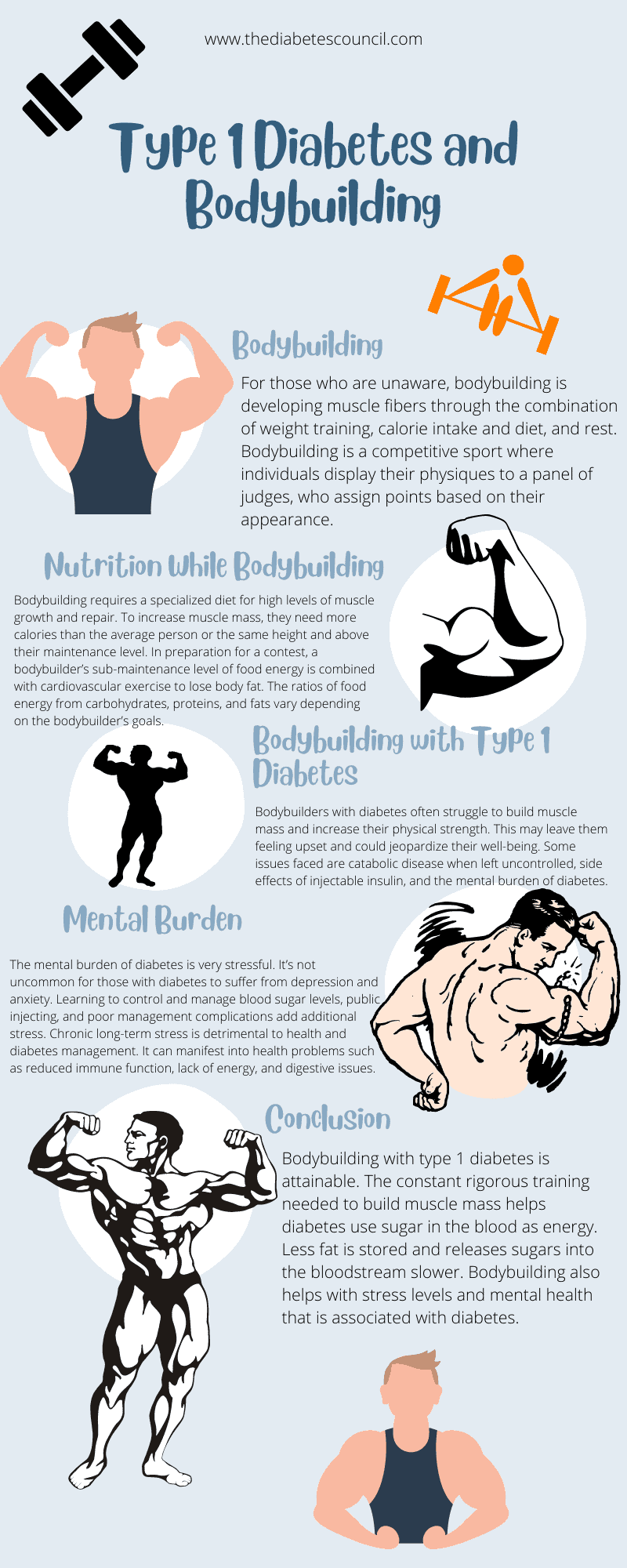
Conclusion
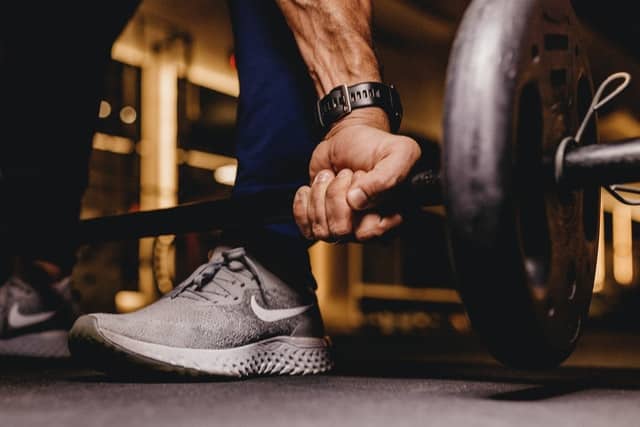
Type 1 diabetes is usually diagnosed in children ages 8-12 years but can also be diagnosed in adults. Type 1 diabetes is when the pancreas doesn't produce insulin, or not enough insulin, and is a life-long autoimmune disease. There is a lot to learn about diabetes and a lot that scientists don't know.
Unfortunately, there is no cure, but scientists do know that regular exercise is highly recommended. Bodybuilding is great for those with diabetes because it requires low glycemic carbohydrates and more protein, which is beneficial to those with diabetes. Bodybuilding also promotes a healthy relationship with food, learning to maintain a healthy diet and use food as fuel.
Bodybuilding has gone through many changes over the years. Many organizations were created, and different equipment was invented. It became prevalent, and many winners are awarded every year. Anabolic steroids were widely used, and to reduce this, testing was created. It then has become illegal to use steroids in bodybuilding competitions. More effective equipment was invented and marketed and different supplements and shakes.
Bodybuilding with type 1 diabetes is attainable. The constant rigorous training needed to build muscle mass helps diabetes use sugar in the blood as energy. Less fat is stored and releases sugars into the bloodstream slower. Bodybuilding also helps with stress levels and mental health that is associated with diabetes.
Resistance training is one of the best things a person with diabetes can do. Remember to maintain a healthy diet, wear a medical alert bracelet, make regular doctor appointments, and most importantly, don't try to be perfect. Have fun and look good while doing it!



